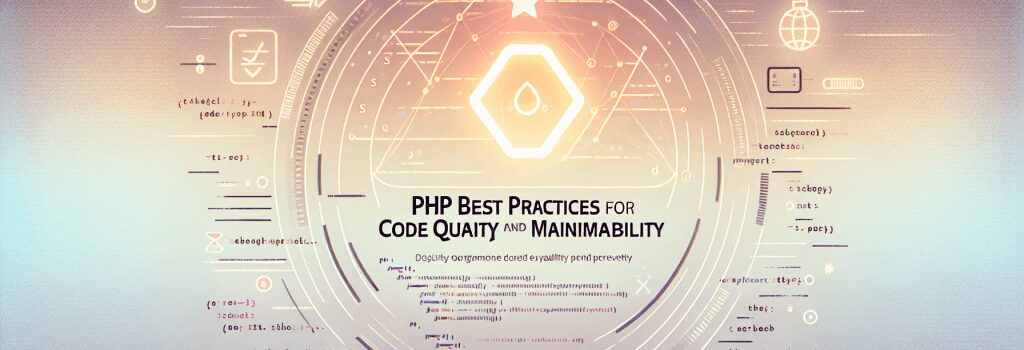PHP Best Practices for Code Quality and Maintainability

Welcome aboard, my geeky friend! If you’ve survived the thrilling adventures through the mystical lands of HTML, CSS, JS, and the enchanting kingdom of WordPress, congratulations! Pat yourself on your binary back for making it this far. Now, it’s time for us to delve into the deep, dark dungeons…err… the bright, sunny meadows of PHP. So grab a cup of node, I mean, Joe, let’s traverse the ‘PHP Best Practices for Code Quality and Maintainability’.
But wait, here’s a joke to lighten the mood – Why don’t programmers like nature? It has too many bugs!
Let’s kick off this coding party, shall we?
Understanding PHP Code Quality
Does your code look like a bowl of spaghetti, all tangled-up and messy? Fear not! The idea of ‘Code Quality’ is here to rescue your disorderly code from the depths of chaos!
Simply put, ‘code quality’ refers to how efficient and maintainable your code is. A high-quality PHP code is like a well-crafted sonnet – it’s clean, precise, and beautiful to behold.
Importance of High PHP Code Quality
Good quality PHP code can make or break your web reality. It ensures that your code is bug-free, maintainable, and performant. It also helps future-you or fellow developers to understand what the past-you did without pulling their hair out.
Best PHP Practices for Code Quality and Maintainability
Just like grandma’s secret cookie recipe, here are some main ingredients you need to concoct a batch of high-quality PHP code!
Consistent Naming Conventions
Just like naming your favorite pet, your identifiers such as variables and function names should be short, meaningful, and precise. This avoids confusion and makes your code easy to read.
Commenting & Documentation
Comments are love letters to your future self. They describe what a block of code is doing, making it easy for anyone (including future-you) to know what’s going on.
Keep it DRY
DRY, or ‘Don’t Repeat Yourself’, is the golden rule of coding. Repeating code is like replaying the same track on loop – it’s annoying and leads to more bugs. Instead, aim for reusable, modular code.
Using PHP built-in functions
PHP comes with a plethora of built-in functions. Instead of reinventing the digital wheel, make use of them!
Planning and Testing
Spend ample time planning your code strategy before diving in. Good planning can save you tons of debugging time later on. And don’t forget to TEST, TEST, TEST! Remember, only a programmer can spell TEST as TYME!
Voila, there you have it – PHP best practices for code quality and maintainability. May the source code be with you, always. Good luck and happy coding, my geeky comrade!
Oh, almost forgot. Here’s one more joke for the road. Why do programmers prefer iOS development? Because on iOS, there are no Windows or bugs!


